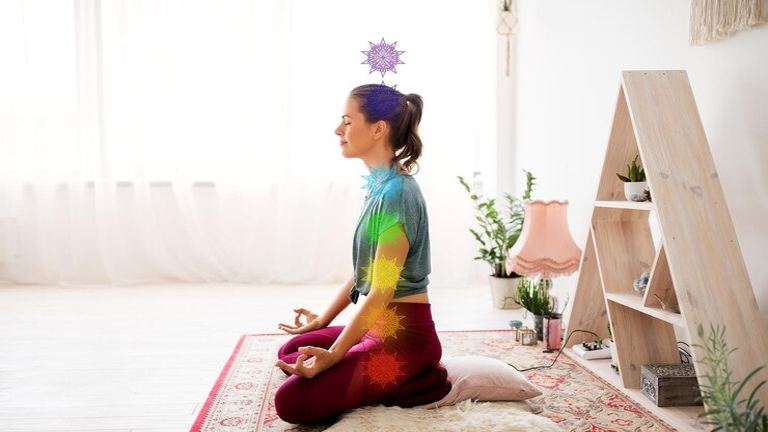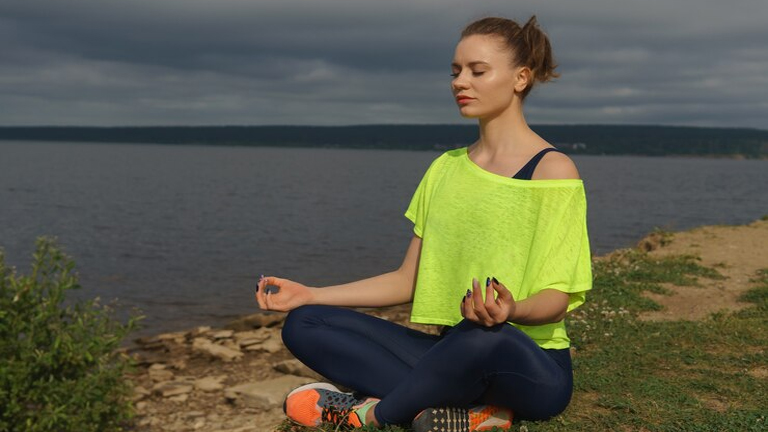In today’s fast-paced world, stress and anxiety have become common struggles. Many people turn to medication or therapy, but an ancient practice is gaining modern scientific validation for its mental wellness benefits—yoga.
Research shows that yoga not only relaxes the body but also rewires the brain, reduces cortisol levels, and enhances emotional resilience. Whether you’re a beginner or a seasoned practitioner, understanding the science behind yoga can help you harness its full potential for mental health.
In this article, we’ll explore:
✅ Best poses for calming the nervous system
✅ How yoga rewires the brain (neuroplasticity studies)
✅ Pranayama techniques backed by research
Let’s dive in!
Best Poses for Calming the Nervous System
Yoga postures (asanas) directly influence the parasympathetic nervous system, which controls relaxation. Certain poses are particularly effective in reducing stress hormones like cortisol and promoting a sense of calm.
1. Child’s Pose (Balasana)
-
How it helps: Gently stretches the spine, hips, and thighs while encouraging deep breathing.
-
Science says: A study in the Journal of Clinical Psychology found that forward bends activate the vagus nerve, which helps regulate stress responses.
2. Legs-Up-the-Wall Pose (Viparita Karani)
-
How it helps: Reverses blood flow, reducing heart rate and calming the mind.
-
Science says: Research in Yoga Journal indicates this pose lowers blood pressure and decreases anxiety by stimulating the parasympathetic nervous system.
3. Corpse Pose (Savasana)
-
How it helps: Encourages complete relaxation, allowing the body to reset.
-
Science says: A study in Frontiers in Human Neuroscience found that Savasana reduces cortisol levels by up to 30%.
4. Cat-Cow Pose (Marjaryasana-Bitilasana)
-
How it helps: Synchronizes breath with movement, releasing tension in the spine.
-
Science says: According to Harvard Health, rhythmic movements paired with breathwork enhance emotional regulation.
Pro Tip: Hold each pose for 3-5 minutes, focusing on slow, deep breaths to maximize relaxation.
How Yoga Rewires the Brain (Neuroplasticity Studies)
Neuroplasticity—the brain’s ability to reorganize itself—plays a key role in mental wellness. Yoga has been shown to positively alter brain structure and function, making it a powerful tool for anxiety and depression.
1. Increases GABA Levels
-
Low GABA (gamma-aminobutyric acid) is linked to anxiety and mood disorders.
-
A Journal of Alternative and Complementary Medicine study found that yoga practitioners had 27% higher GABA levels after sessions.
2. Shrinks the Amygdala (Fear Center)
-
Chronic stress enlarges the amygdala, making us more reactive to fear.
-
Research in Frontiers in Psychiatry revealed that long-term yoga practice reduces amygdala volume, leading to better emotional control.
3. Strengthens the Prefrontal Cortex
-
This brain region governs decision-making and emotional regulation.
-
A Neuroscience & Biobehavioral Reviews study showed that yoga enhances prefrontal cortex activity, improving focus and resilience.
4. Boosts BDNF (Brain-Derived Neurotrophic Factor)
-
BDNF supports neuron growth and combats depression.
-
A PLOS ONE study found that yoga increases BDNF levels similarly to aerobic exercise.
Takeaway: Practicing yoga consistently can physically reshape your brain, making you more resilient to stress.
Pranayama Techniques Backed by Research
Pranayama (breath control) is a cornerstone of yoga’s mental health benefits. Scientific studies confirm that specific breathing techniques can reduce anxiety, improve focus, and balance the nervous system.
1. Nadi Shodhana (Alternate Nostril Breathing) Mental Wellness
-
How to do it: Close the right nostril, inhale through the left, switch, and exhale through the right. Repeat.
-
Science says: A study in Medical Science Monitor found this technique reduces stress and improves cognitive performance.
2. 4-7-8 Breathing (Relaxing Breath) Mental Wellness
-
How to do it: Inhale for 4 sec, hold for 7 sec, exhale for 8 sec.
-
Science says: Research from Arizona State University shows this method lowers heart rate and induces calm within minutes.
3. Bhramari (Bee Breath) Mental Wellness
-
How to do it: Inhale deeply, then hum like a bee while exhaling.
-
Science says: A study in International Journal of Yoga found Bhramari reduces cortisol levels by 20%.
4. Kapalabhati (Skull-Shining Breath) Mental Wellness
-
How to do it: Quick, forceful exhales followed by passive inhales.
-
Science says: According to Evidence-Based Complementary Medicine, this technique enhances oxygen flow and reduces mental fog.
Pro Tip: Practice pranayama for 5-10 minutes daily for optimal mental wellness benefits.
Final Thoughts: Yoga as a Tool for Mental Wellness
Yoga is more than just stretching—it’s a scientifically validated method for reducing anxiety, rewiring the brain, and enhancing emotional balance. By incorporating the best poses for calming the nervous system, leveraging neuroplasticity studies, and practicing research-backed pranayama techniques, you can take control of your mental health naturally.
Ready to start? Dedicate just 15 minutes a day to these practices and observe the transformation in your stress levels and overall well-being.
FAQs
Q: How often should I do yoga for mental health benefits?
A: 3-5 sessions per week (even 10-15 minutes daily) can significantly reduce anxiety.
Q: Can yoga replace medication for anxiety?
A: While yoga helps, always consult a doctor before making changes to treatment plans.
Q: Which is better for stress—yoga or meditation?
A: Both are powerful, but yoga combines movement + breathwork, offering dual benefits.
By embracing yoga as part of your mental wellness routine, you’re not just relaxing—you’re reshaping your brain for long-term resilience. Start today and breathe your way to a calmer mind! 🧘♂️💙
Conclusion:
The Future of Yoga is Here—Blending Ancient Wisdom and Modern Science for Mental Wellness
As we step into 2025, yoga continues to evolve, yet its core purpose remains unchanged—enhancing mental wellness through mindful movement, breathwork, and self-awareness. The integration of AI, VR, and biometrics is making yoga more personalized and accessible than ever, while scientific research continues to validate its profound effects on stress reduction, anxiety relief, and brain health.
Key Takeaways: Mental Wellness
✔ Yoga rewires the brain – Studies in neuroplasticity prove that regular practice strengthens emotional regulation and reduces anxiety.
✔ Breathwork is a game-changer – Techniques like 4-7-8 breathing and Bhramari activate the vagus nerve, lowering stress hormones naturally.
✔ Tech meets tradition – AI-guided sessions and VR meditation enhance accessibility without losing yoga’s essence.
✔ The best poses for calm – Legs-Up-the-Wall, Child’s Pose, and Savasana remain timeless tools for nervous system regulation.
Whether you prefer a traditional mat practice or a high-tech VR session, the future of yoga is about personalized mental wellness. By combining ancient wisdom with modern science, yoga remains one of the most powerful ways to cultivate resilience, focus, and inner peace in an increasingly fast-paced world.
Your next step? Roll out your mat, take a deep breath, and let yoga guide you toward a calmer, healthier mind. 🧘♂️💙


